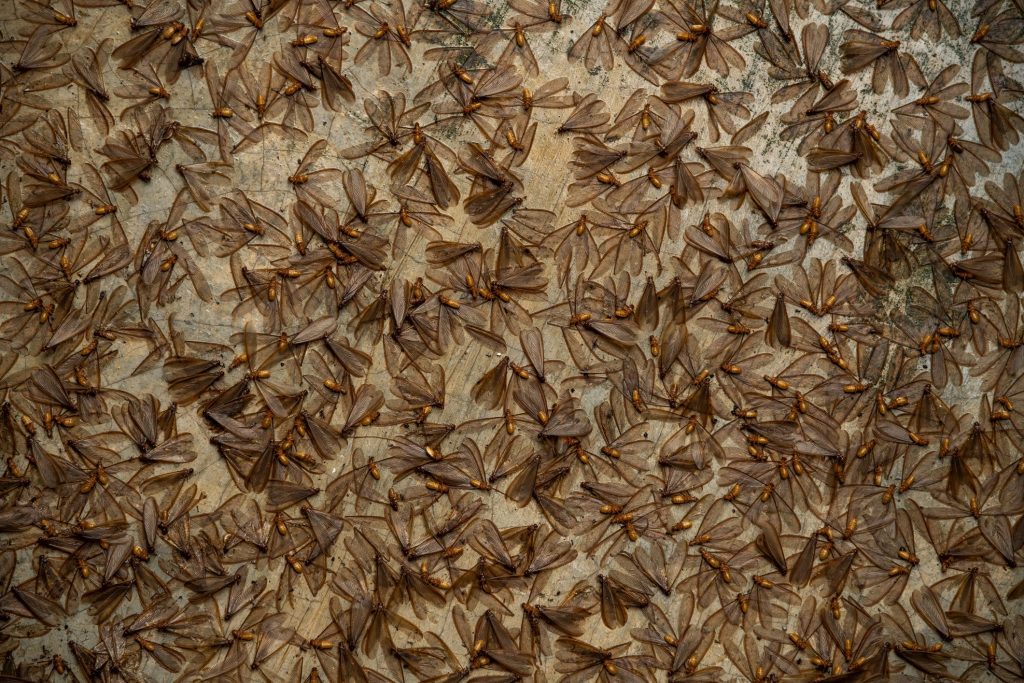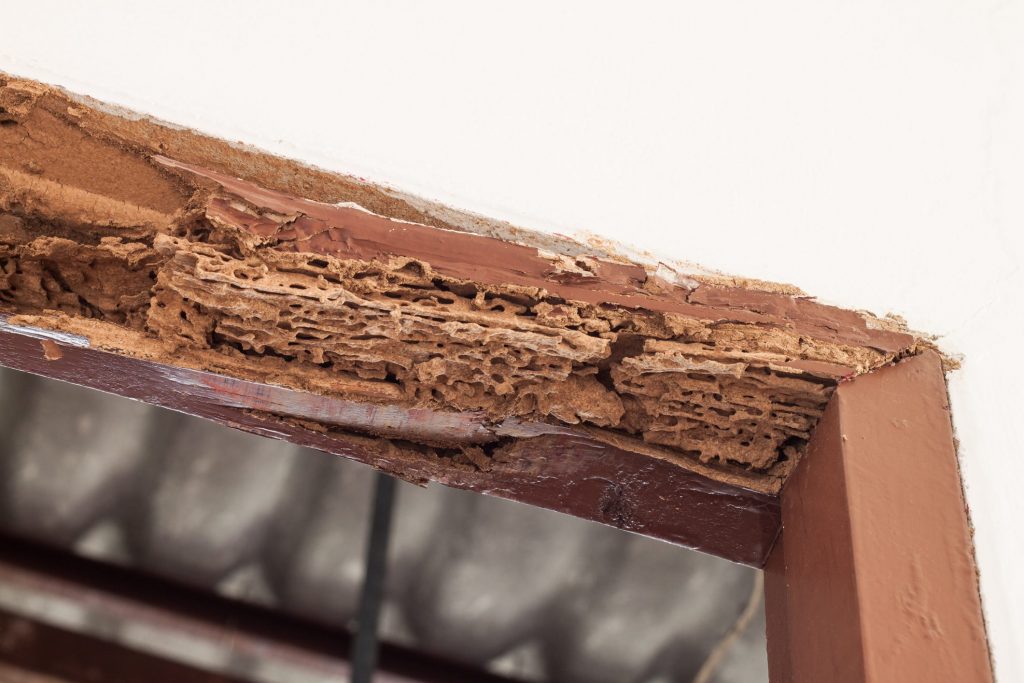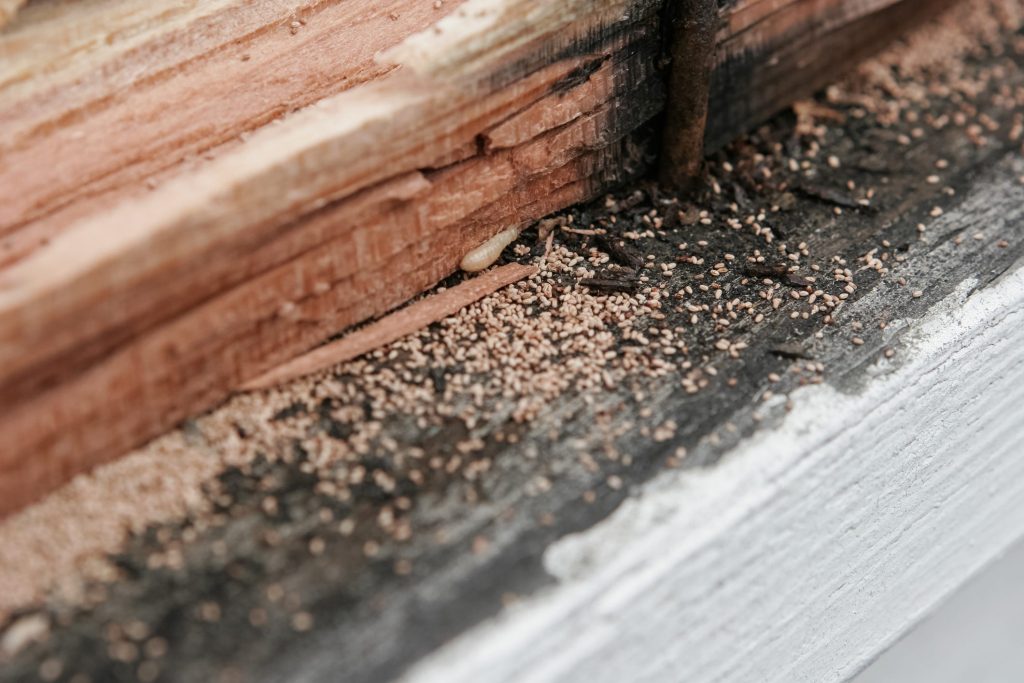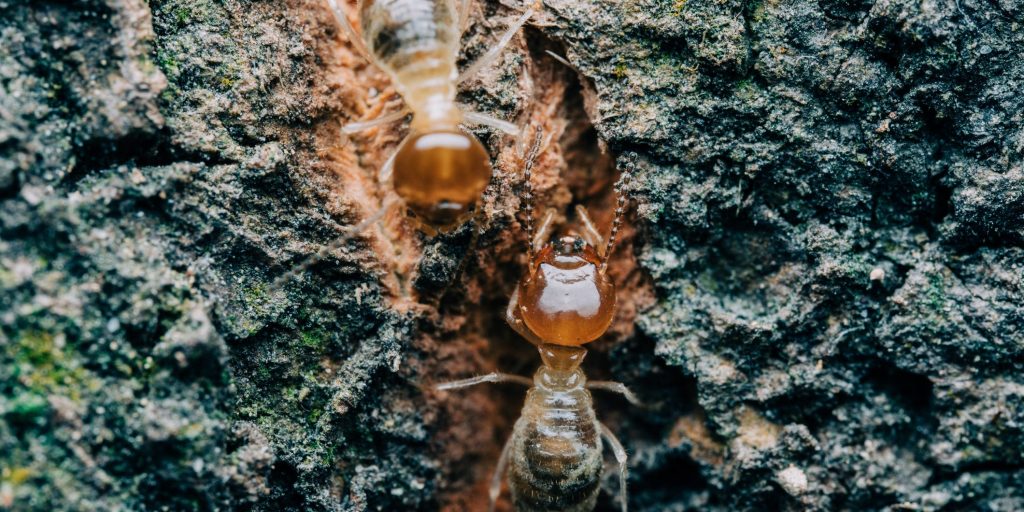- Termites are wood-destroying insects that eat anything containing cellulose.
- Look for signs like mud tubes and wood damage to see if you may have a termite infestation.
- While this article can help you identify signs of termites, you'll need a professional to get rid of an infestation permanently.
You've recently spotted some insects fluttering around your home and find yourself worrying about the potential of termites. But how can you tell they're termites? And what should you do if you identify a termite infestation?
Termites are small wood-destroying insects that live in colonies, similar to ants. According to the US Environmental Protection Agency (EPA), estimates suggest they cause billions of dollars in structural damage annually.
And they don't just eat through wood – they can damage anything containing cellulose, including wallpaper and carpeting. While they won't eat plastic or foam, they're happy to tunnel through these materials. Knowing how to spot them can help you prevent and promptly treat an infestation before you need to spend thousands on repairs.
Twin Forks Pest Control founder Brian Kelly shares five common signs of termites you should never ignore.
Sign 1: Swarmers (flying termites)

Swarmers are flying termites that don't bite, sting, or eat wood. But, they're often the first sign of a termite infestation. That's because their only purpose is to reproduce and establish new colonies during the swarming season. Kelly explains that you're most likely to find wings and spot flying termites during the spring.
One way to spot whether they've infested your home is to look for discarded wings, says Kelly.
"Termite swarmer wings are pale-colored and are usually ¼ to ½-inch long," says Kelly. Once swarmers find mates, they shed their wings, often leaving them behind on windowsills and other entry points.
Sign 2: Hollow or blistering wood

Damaged wood is another potential sign of termite activity. You're most likely to spot wood damage in areas where termites can get into your home through wood-to-ground contact, says Kelly, including door frames, deck posts, porch steps, and structural supports.
If you spot wood damage, Kelly recommends carefully inspecting the damaged area for signs of mold or mildew. Mildew typically has a powdery appearance while mold may look damp or fuzzy. "If you find any, then you have a wood rot problem." Wood rot isn't a sign of termite damage, but continuously damp wood can attract pests like termites.
Dry wood that comes off easily in chunks is likely dry rot, says Kelly, a type of damage caused when fungal spores come into contact with damp wood.
Hollow wood, on the other hand, or wood with tunnels, is a sign of a termite infestation. You can tell wood is hollowed out because it sounds that way when tapped.
Sign 3: Frass

Termite frass, or feces, is another sign of termite activity. Frass indicates that termites are burrowing through and eating the wood in your home. Termites create small tunnels to rid their nests of droppings, leaving it behind throughout your house. You may sometimes notice holes near areas where you've spotted frass.
Dropping appearance varies depending on the species, but they're generally very tiny and often wood-colored. They may be mistaken for sawdust or dirt. If you don't see frass, you may be able to smell it, explains Kelly, since it can give off a moldy or mildew smell.
Sign 4: Mud tubes

According to the University of Missouri Extension Service, the termite species most likely to cause damage to homes in the US is the eastern subterranean termite.
Subterranean termites are most likely to create mud tubes, which are brown-colored tunnels composed of wood and soil, measuring about 0.5 to 2.5 centimeters wide. Because these types of termites have soft bodies, mud tubes allow them to travel around your home without exposing them to external threats like dry weather and predators.
However, subterranean termites can find other ways into your home. Not seeing any mud tunnels on the outside of your home doesn't mean you don't have an infestation. Still, mud tunnels are a clear sign of termite activity. Termites often build mud tubes in visible locations such as along fences, porches, nearby tree trunks, and wall corners.
Sign 5: Tight-fitting doors and windows

Any doors that are suddenly hard to close or open are also potential signs of termites, says Kelly.
Because termite activity can increase humidity levels, door and window frames can expand, making these entryways harder to open or close. This sign is most likely with subterranean termites, which emit more moisture than other species.
If termites are active around your doors or window, you may also notice other signs of activity like frass and wood damage.
What to do if you identify one of these signs
Because it's not possible to treat a termite infestation on your own, it's important to call a professional to inspect the damage and determine the proper course of treatment.
A professional exterminator is equipped with the knowledge to identify the type of termite and the best way to exterminate it.
That said, damage doesn't happen overnight and there's no need to panic if you notice signs of termites. The North Carolina Extension Office explains that serious damage can take between 3 to 8 years to occur, so taking your time to find a qualified professional is more critical than hiring someone on the spot.
Insider's takeaway
Many things, like swarmers, discarded wings, frass, damaged wood, and mud tubes, can tip you off to a termite infestation. While termites can do serious damage, especially if left unaddressed, damage takes awhile to become serious. Finding a qualified professional who can identify the type of termite infestation is crucial for getting rid of these wood-damaging insects.
